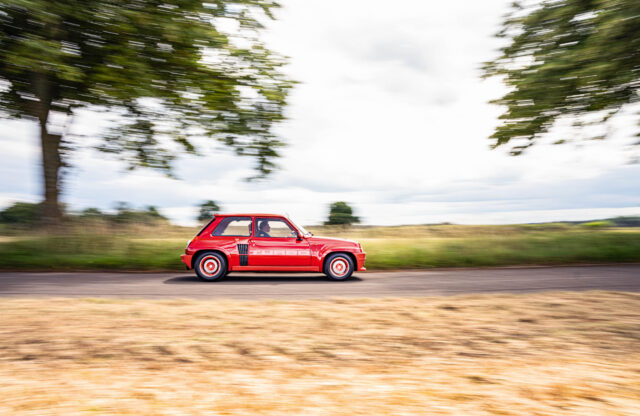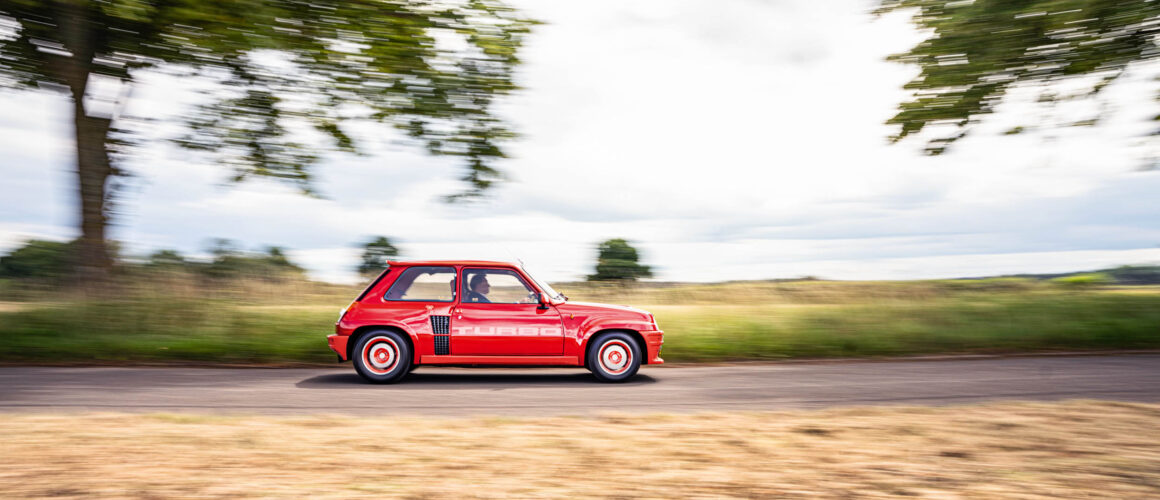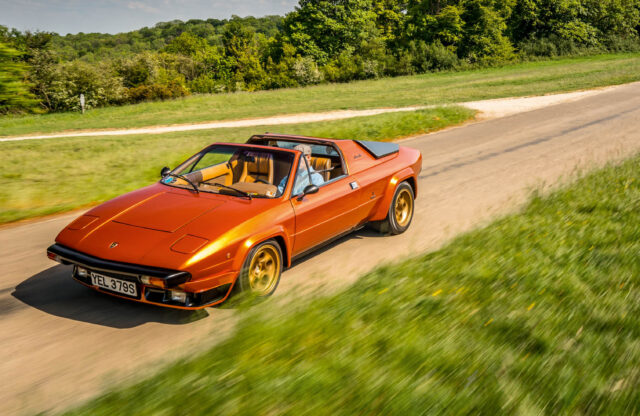Homologation specials were nothing new in 1980, but few had turned a shopping car into such a beast, or transformed it so thoroughly in the process
There are degrees of homologation special. Many are no more than raw street-legal versions of savage race or rally cars, but there are a few that are so comfortable in their own skin that it feels almost as if the rally car might have been invented solely as an excuse then to create the road car. The Renault 5 Turbo is firmly in the second camp. Sitting in its plush 1970s-style (and coloured) seats, flicking the flimsy stalks straight out of the model that inspired it and gave it two-thirds of its name, and gazing in wonder at (and through) a steering wheel that looks as if it could have come straight out of Logan’s Run, the rally stages of Corsica seem a million miles away.
As, it has to be said, does the stock Renault 5. There are similarities, of course, especially if you squint, from a distance, and when you change gear or use those stalks, but, once you have moved both the engine and the driven wheels from the front to the rear, any tenuous visual connection with Michel Boué’s original is severed.
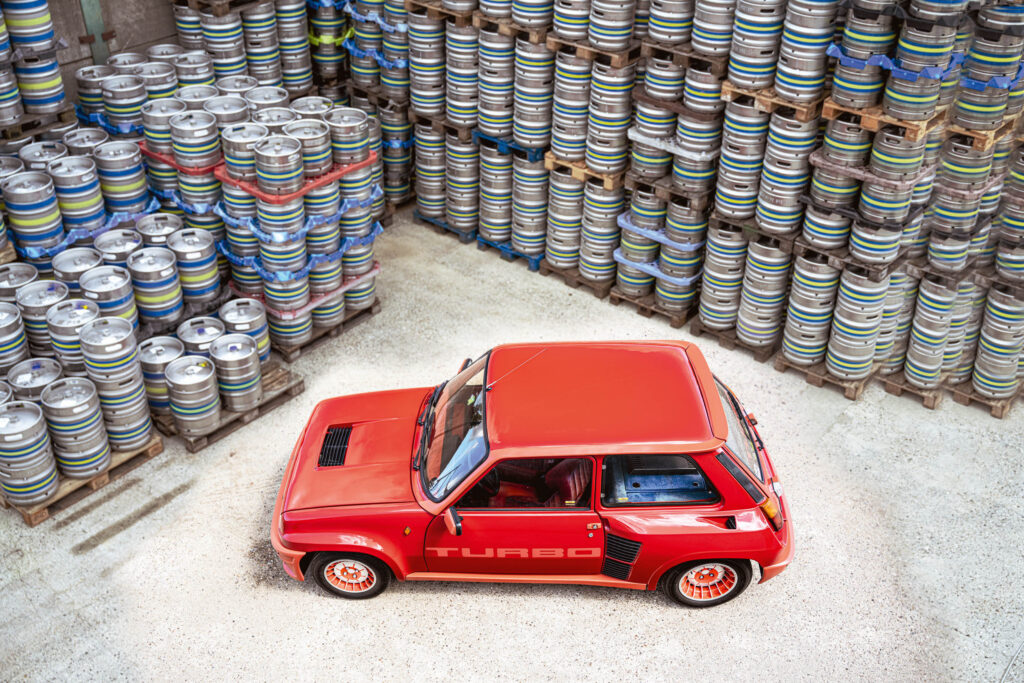
Is it even worth mentioning the original 5? Well it did donate the engine. Produced in its millions from 1972 to 1985 (originally, then on well into the 1990s) the Renault 5 was a funky five-seat (at a push) cold-hatch-cum-supermini that was ‘a hoot to drive’ (© all motoring journalists ever). It was French, and quirky, archly so, as demonstrated by its being called Le Car in North America and Go in Japan (though the latter was also a smart pun), but slipped seamlessly into Renault’s distinguished lineage from Quatrelle to Twingo. Also in Renault’s baby people’s car tradition there was a bewildering array of variations, not least in an engine bay that started with a mere 782cc and ended with the 1721cc Supercinque. At between 730 and 850kg – aided by the lightweight monocoque and pioneering polyurethane bumpers – not a lot more was needed and it was an extremely accomplished city car.
There were hotter versions, of course, even a turbo from Alpine or Gordini depending on the territory, and Copa, but a step-change was coming. La Régie had set its sights on Group 4 rallying (which would later sire Group B). Keen to capitalise on the publicity being generated by its turbo engines in F1, the plan – Projet 822 internally – was masterminded by Jean Terramorsi, who died not long after initiating the programme in the mid-1970s. It was picked up by Gérard Larrousse, Bertone drumming up the body and the interior. The roll-call of credits included Bertone big guns Deschamps and Gandini, plus, after they had worked their magic, coachbuilder Heuliez, which turned the concept into a working reality. Larrousse was reportedly driving a prototype as early as 1978, but the road- and rally- ready 5 Turbo wouldn’t emerge for another two years. By then it had already caused quite a stir, as you would expect when a company takes its most cooking car and sexes it up like that. Perhaps the furore was why the 5 was the model chosen for such treatment in the first place. They’re devilishly clever, these marketing types.
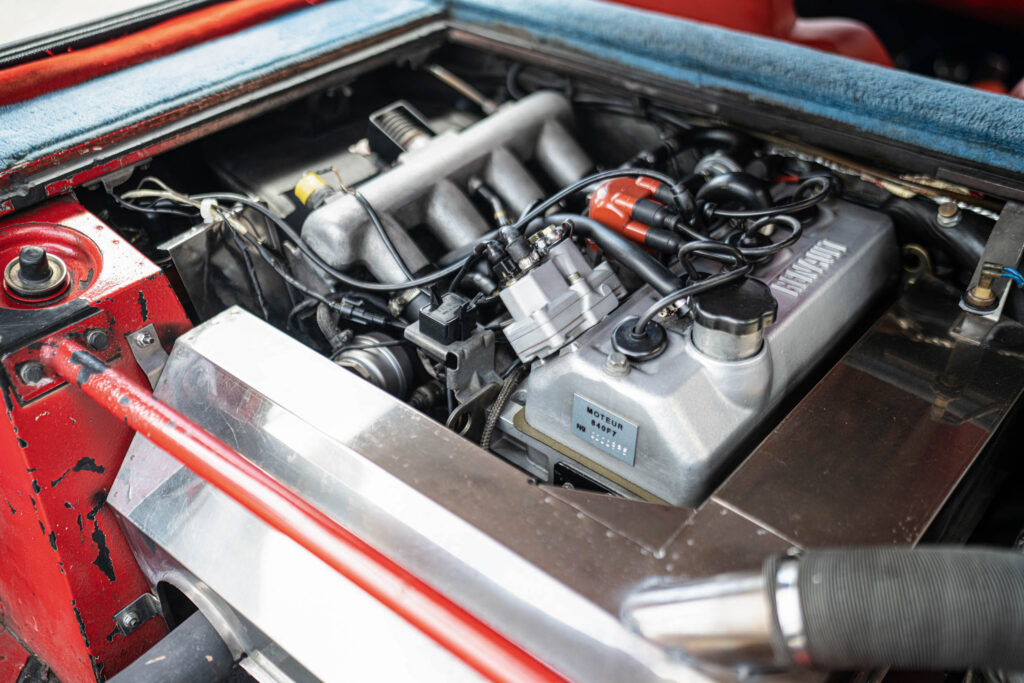
It wasn’t just the panels and engine placement that changed: lighter steel and plastics were used everywhere that aluminium wasn’t, compression was lowered to 7:1, the Alpine A310’s Type 369 gearbox was enlisted, and even the windows were slimmed.
Jean Ragnotti got its competition career off to a blistering start by winning the January 1981 Monte with Jean-Marc Andrié, and the following year notched up another victory on the Mediterranean isle of Corisca, winning from Jean- Claude Andruet’s Ferrari 308.
Truth be told, both the Turbo and the Turbo 2 were rather left behind by the fast-paced Group 4 and Group B and their biggest success was in the showrooms. Just 400 Turbos needed to be built to homologate the Turbo for the Group 4 World Rally Championship, but such was demand that 1800 were manufactured at a price of about £12,000 (though none was right-hand-drive).
When the Turbo 2 came along in 1983, it just wasn’t the same on the road or the rally stage, rather like the second generation of its distant-cousin road car from 1984-96, having jettisoned some of the original’s playful innocence and purity in favour of brute force and longevity. The interior, lifted from the Gordini version, was almost disappointingly normal, the wacky bespoke Bertone bits long gone, while the alloy panels were largely replaced with steel, adding some 70kg to its heft.
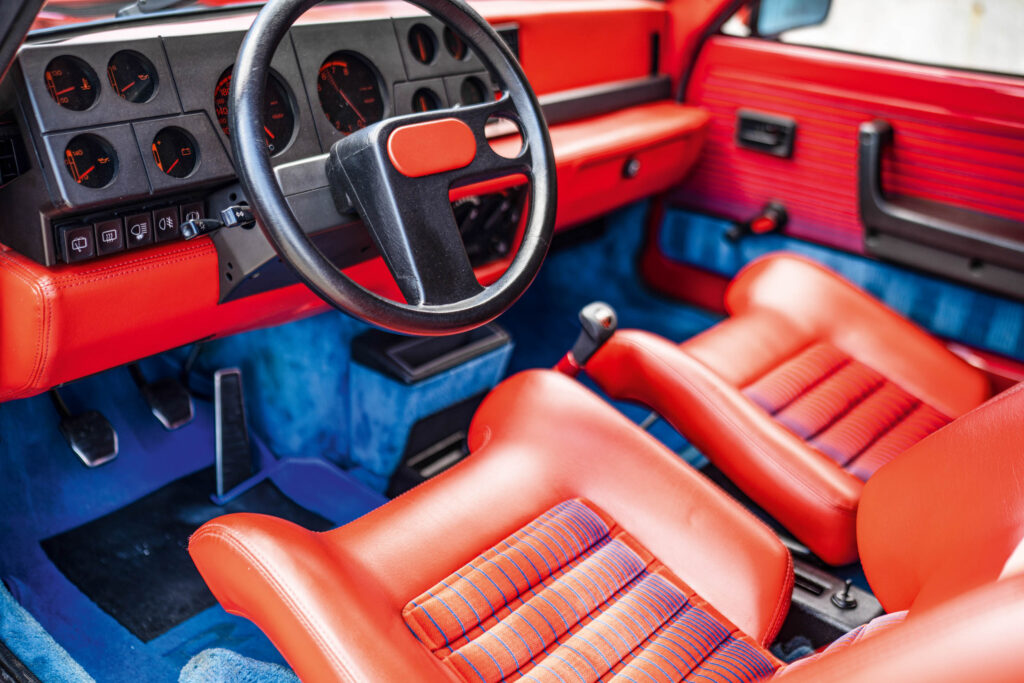
The owner of this car agrees. And it turns out we’ve met him before, his gorgeous Rame Colorado Lamborghini Silhouette having featured in Octane 196. Richard Head, a retired environment, health and safety executive in the oil industry, has garaging for five cars at his Berkshire home.
With his BMWs (3.0 CSL and M635) up on ramps and his Lamborghini and Monteverdi below them, the Renault lives in a separate single garage all by itself. Oh, you’re still thinking about the other cars. Quite. It’s an eclectic collection, which for the most part follows a pattern of ‘see car at Goodwood, research it, narrow it down to a specific model, edition and trim level, and then buy it’. It’s nice to discover that, after a period of common sense, Richard has returned to the more idiosyncratic roots that made his first two cars an FX-4 taxi and a Fiat X1/9 and his first company car a Citroën BX. It all kicked off around the turn of the millennium when he was posted to Cairo for five years.
‘I remember telling myself “When I get back I am going to buy myself a classic car.” I read an article about the BMW M635 and it ticked all the boxes, so I started researching them and pretty soon I ended up with it having to be a right-hand-drive Macau Blue with white leather Motorsport special edition, of which they made five.’
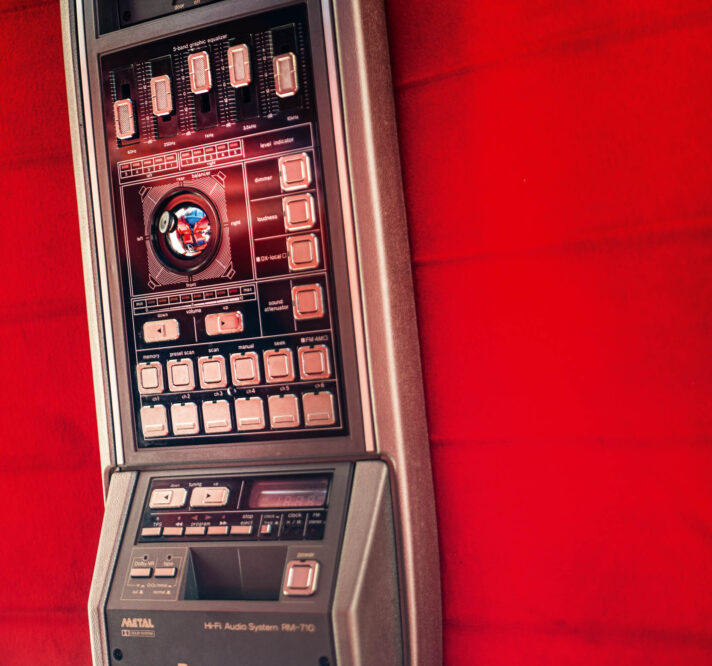
It’s hard to describe the demonic joy of thrashing this little Renault – it is a defibrillator of a car
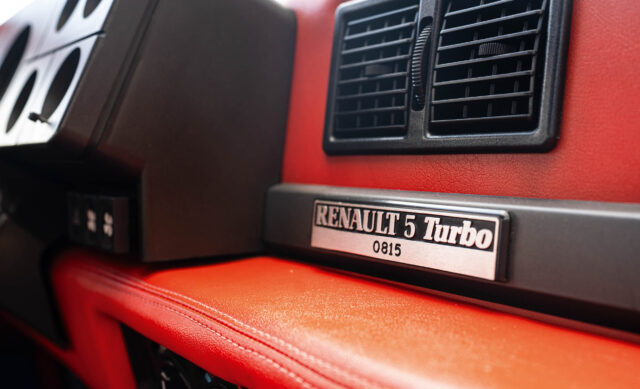
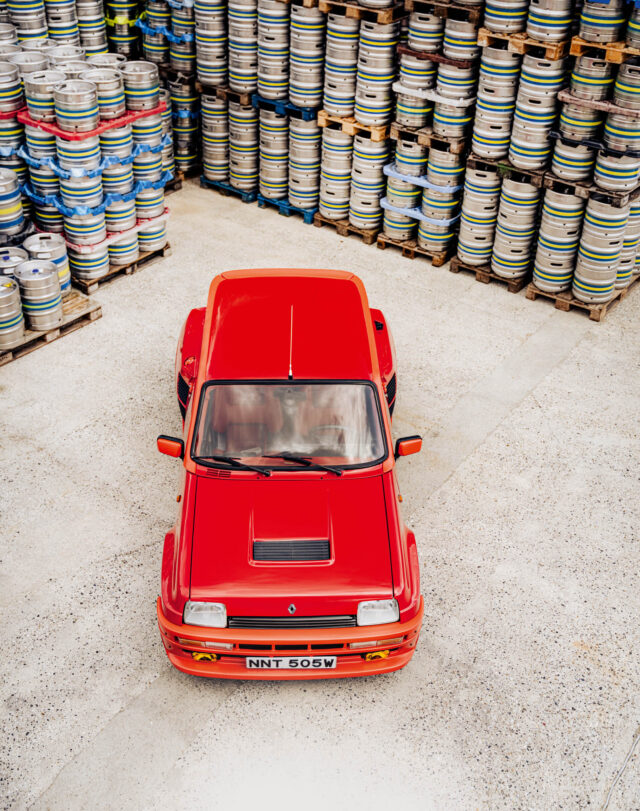
After the M6 came an E30 M3 convertible, but that was sold to make way for the CSL, which had failed to sell at auction (at Goodwood, of course). Then came a Z1 – ‘I didn’t mean to buy it; I made a very low offer just to be polite and then he confounded me by accepting it’ – and an epiphany: ‘I realised I had lots of very good, reliable classics, but they were not very, er, challenging. I needed something Italian and silly and ridiculous. I started with a long list of pointy Italian rear mid-engined V8s and whittled it down until I was going to buy a Urraco, but then I met this chap with a Silhouette at a Goodwood Breakfast Club meet…’
The most recent acquisition, a Monterverdi High Speed 375L, was slightly different. Richard’s final posting before retirement was seven years in Switzerland. ‘I mainly knew them as a winning hand in Top Trumps, but I saw one on the club display at the Geneva motor show in 2017 and started looking. I had to buy one more than a year before leaving or you get smashed by tax so I found this example, used it for a year and then drove it home. It’s quite a souvenir, far more interesting than just buying a Swiss watch.’
Before the Swiss GT came the Renault and you can guess how that came about: ‘I was walking through a car park at Goodwood in 2013 and I saw a brown one, just parked up. A Turbo 2. I thought “My God, that’s fantastic, I’d love one of those,” so I started doing the research and once you do that and find out about the Turbo 1, with the aluminium and the funky interior, you can’t even consider anything else. Then you decide that if you are going to get a Turbo 1, it needs to be in the launch colour, which is red, and with the red interior so it’s like sitting in a blood vessel. The more you know, the more you seem to limit your own options.’
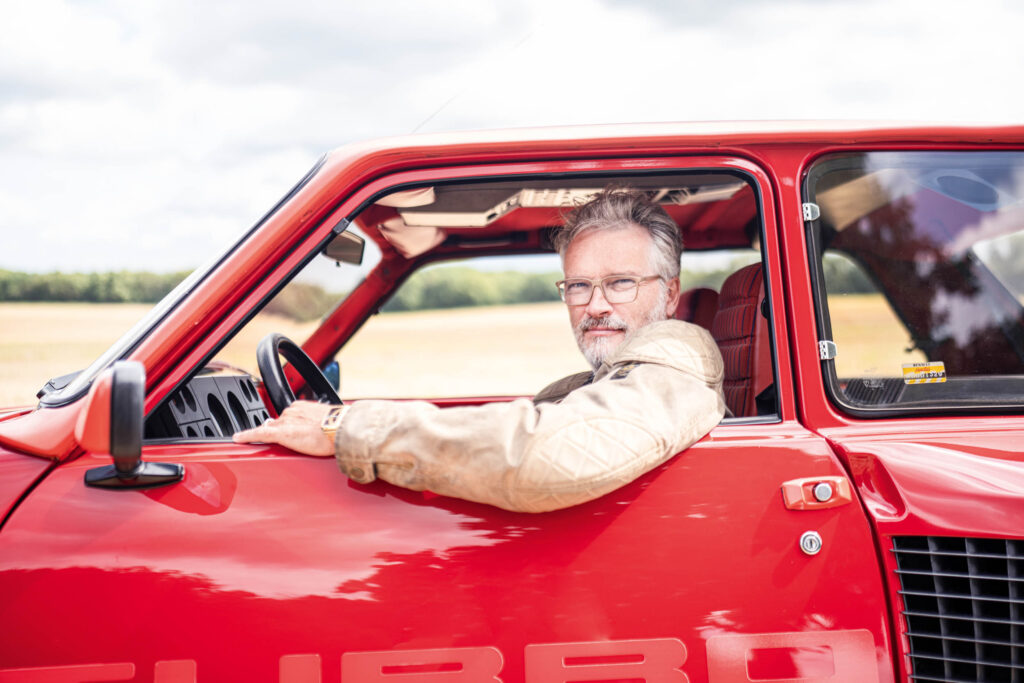
He found this unmolested 1980 Italian car on a German website, but attempts to discuss it were frustrated for months by the language barrier. Finally, he phoned one day and got an English speaker. The car belonged to the owner of the Brescia Renault dealership, who was selling it as it transitioned to a Hyundai franchise. He had owned it from two months old, had done only 40,000km and it had a full service history, but it had mainly just sat in the showroom, so much so that the side facing the window has very slightly more faded paint. Richard flew out and did the deal, then flew back out to drive it home. A cracked cylinder head lining spoiled the adventure, but it got a full engine rebuild back in the UK – ‘It’s only a four-cylinder 1.4, so it’s not that scary.’ Other than a fruity popping Devil exhaust, which was a period option, the 5 Turbo is absolutely stock. Even the leaking De Carbon single-use shocks were repaired rather than replaced with Konis, as would be the norm.
It spent a summer in Switzerland, getting a phenomenal reception driving across France, but other than that it’s now Richard’s ‘hooligan’ car: ‘I use it purely for fun. It feels so much faster than it actually is, so you feel like you’re being a hooligan even when you’re not.’
We all need one of those for blasting around local lanes, but let’s find out if he’s right. Thanks to that trim, the inside has none of the pumped-up menace of the outside, but plenty of nice detail touches akin to the Italian-market Renault diamond-shape wing-mounted indicator repeaters.
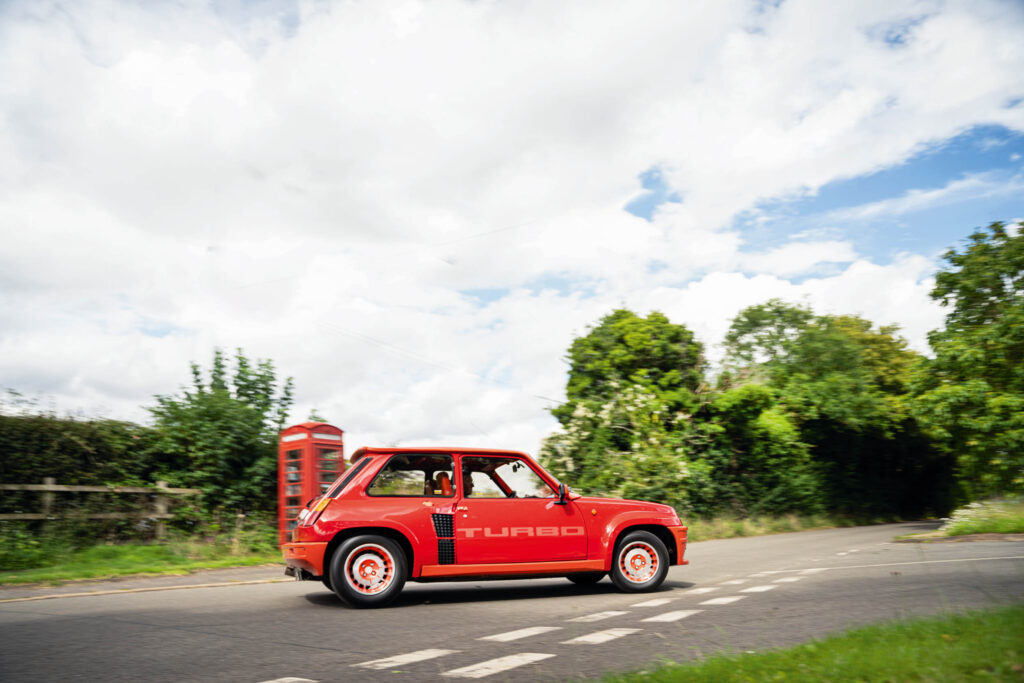
The ally panelwork is so thin you can see it dimple when a mosquito lands on the roof, or you put the key in the lock.
Of course, on a ‘normal’ 5 such skin flex is the sign of the low-quality thin-gauge steel of a rot machine with safety issues. On the Turbo it signals the virtuous dedication to weightsaving. How thin is that door? Well, it’s lightweight enough that, every time you go over a bump or there is a breath of wind, the comparatively heavy wing mirrors will move, flexing the doorskin and cracking the paint. The long-term cure is to fit a reinforcing plate on the inside.
At the back, the Heath Robinson engine cover system may be just carpeted wood but it is ingenious in its operation and offers surprisingly good sound insulation, and also houses what looks like the world’s biggest speaker but is actually the toolbox. Best engine bay feature is the extractor fan in Cotex tubing that sucks heat out rather than forcing cold air in. That’s proper rally stage ingenuity.
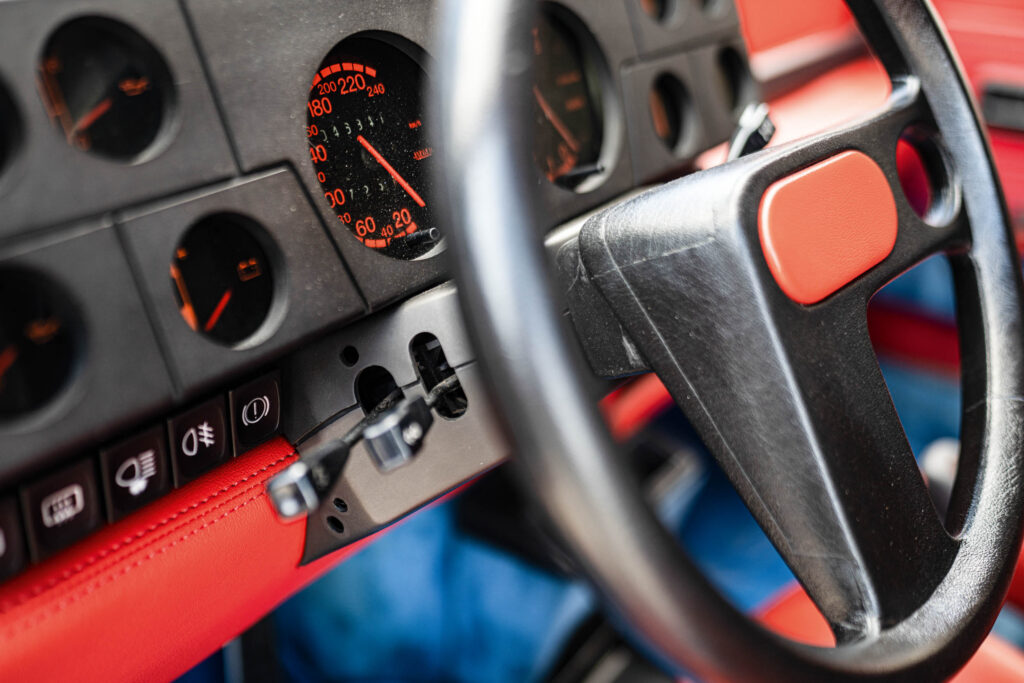
From the driver’s seat the Turbo is a riot of psychedelic colours: the door panels couldn’t be more period if they were illustrated with Bruce Forsyth standing beside a conveyor belt of tat. Yet nothing challenges the norm more than the L-bar wheel, which is surprisingly practical in allowing you to see the dials (6500rpm rev limit).
There is a little limited-edition plaque on that Bertone dash, which curiously reads 0815 for this far earlier car. Underneath, there are futuristically shaped pedals to match the Tron-like alloy wheels. The retro-futuristic interior is topped off by the roof-mounted Panasonic ‘Cockpit’ stereo.
Fire up the Turbo and the exhaust noise invades more than the engine racket, but neither is loud enough to prevent conversation or detract from the experience. The precision of the gearshift seems to depend on the car’s mood, although, with the gearbox slung out beyond the engine, its occasional vagueness is no surprise. Sometimes, when you are clicking through, it is immediate, responsive and taut; at others it seems to wave around, slightly unsure whether it actually has any gears to command.
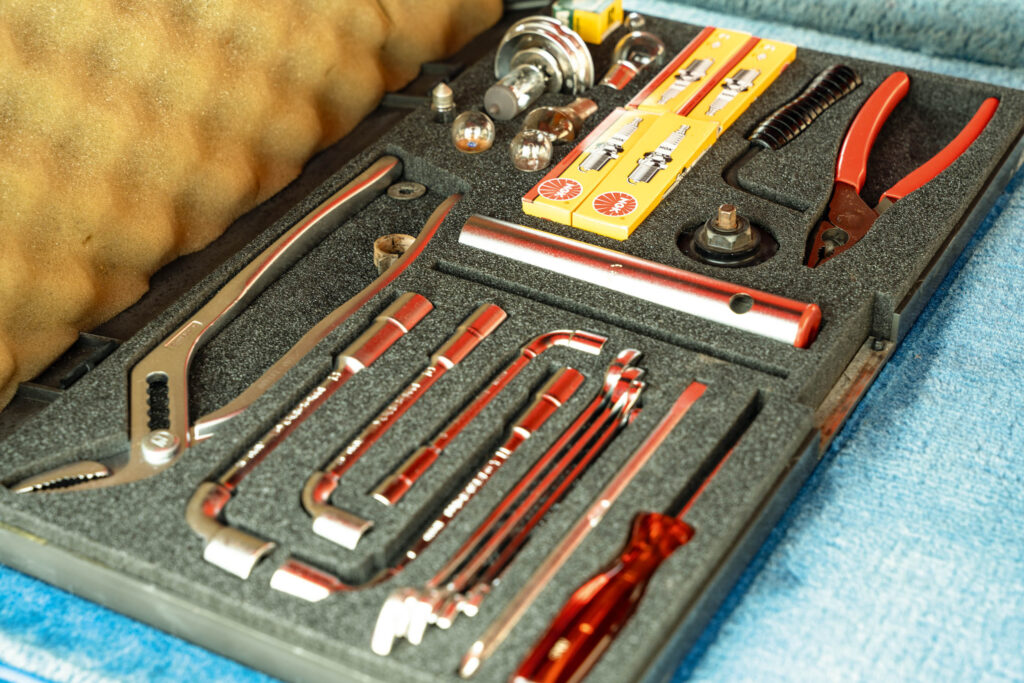
The clutch is easy though occasionally sluggish to engage; it seems to be far more of the ‘engine management’ system than you would expect. That’s because, to drive the 5 Turbo, you always have to be in at least one gear lower than you would expect in order to keep the revs fizzing and the turbo spinning. And whistling. That turbo is pretty immediate for its generation, but its speed of response cuts both ways and power drops off a cliff if you are distracted from full beans even momentarily, which makes the 5 hugely involving and fun to drive, even if it’s not that powerful outright. On tight country roads it also helps if you chant this mantra to yourself all the time you are pressing on: ‘Wider at the back than the front, wider at the back than the front.’
You might incorrectly expect overly light steering and more unruly handling from a car with 60% of its weight at the back, but then maybe also for it to be quicker off the mark. Standing starts are not the little Cléon-Fonte- powered car’s forte; punching through second and third in the mid-range is. There, the Turbo lights up and really can push you back into the relatively upright seat – then you get the sensations of driving a supercar rival.
Yet what this car promises (and delivers) more than anything is eternal youth. It is hard to describe the demonic joy of thrashing this little Renault. It is simple but enlivening, a defibrillator of a car – regardless of your age when you get into it, you’ll be acting 21 within a few hundred yards.
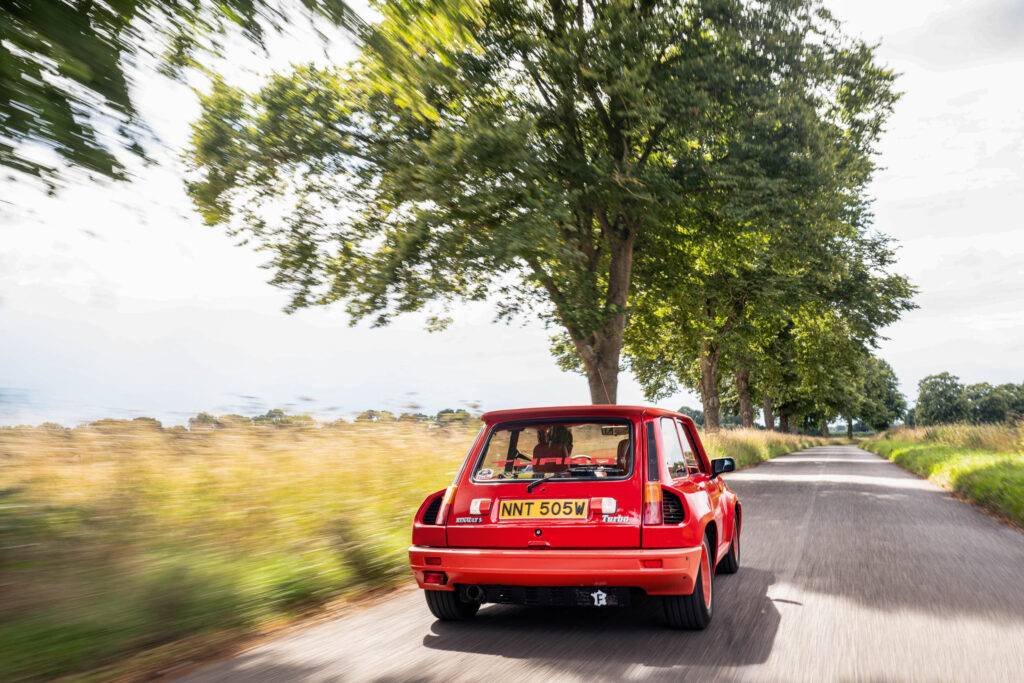
What is disconcerting is having to do something mundane such as indicate or wind down the window (which you do a lot), whereupon the reminder that you are driving a Renault 5 – flimsy shopping car of a generation – hits you in the face. As do the excellent all-round vision and the tight turning circle. All that is stopping you using this car for the school run is the almost total lack of stowage.
And that’s because this isn’t some hastily lashed-up homologation special: everything feels thought out and planned with proper attention to detail. You can see how anyone with a hankering for a Renault 5 Turbo starts researching and ends up here. Exactly here. A highly original first-gen car in red, orange and every other colour from that zone of the spectrum. It offers a weird alchemy that manufacturers would do well to rediscover, but you suspect they never will because such self-indulgence is now almost unimaginable. This ridiculously engaging Renault is the most fun, but least practical, hot hatch ever.
There was a rally car, you say?
1980 Renault 5 Turbo specifications
Engine Rear/mid-mounted 1397cc OHV four-cylinder, Bosch K-Jetronic fuel injection, Garrett T3 turbocharger
Power 160bhp @ 6000rpm
Torque 155lb ft @ 3250rpm
Transmission five-speed manual, rear-wheel drive
Steering Rack and pinion
Suspension Front: double wishbones, longitudinal torsion bars, telescopic dampers, anti-roll bar. Rear: double wishbones, coil springs, telescopic dampers, anti-roll bar
Brakes Vented discs
Weight 941kg
Top speed 128mph
0-60mph 6.9sec
Thanks to the Renegade Brewery, which holds a Cars and Coffee meet every month.
